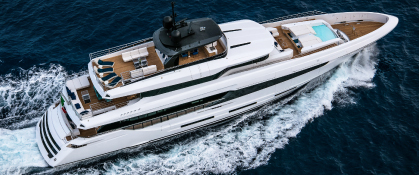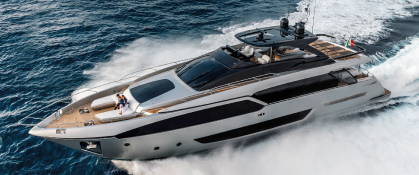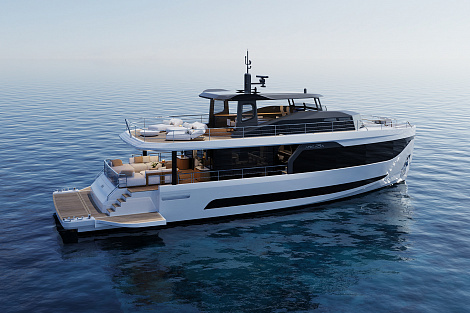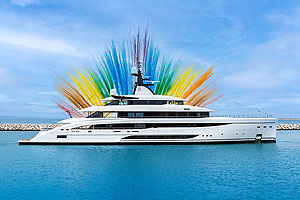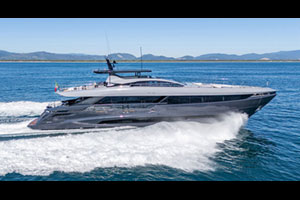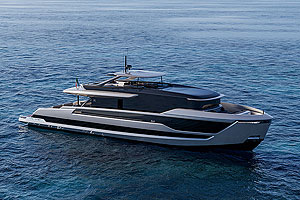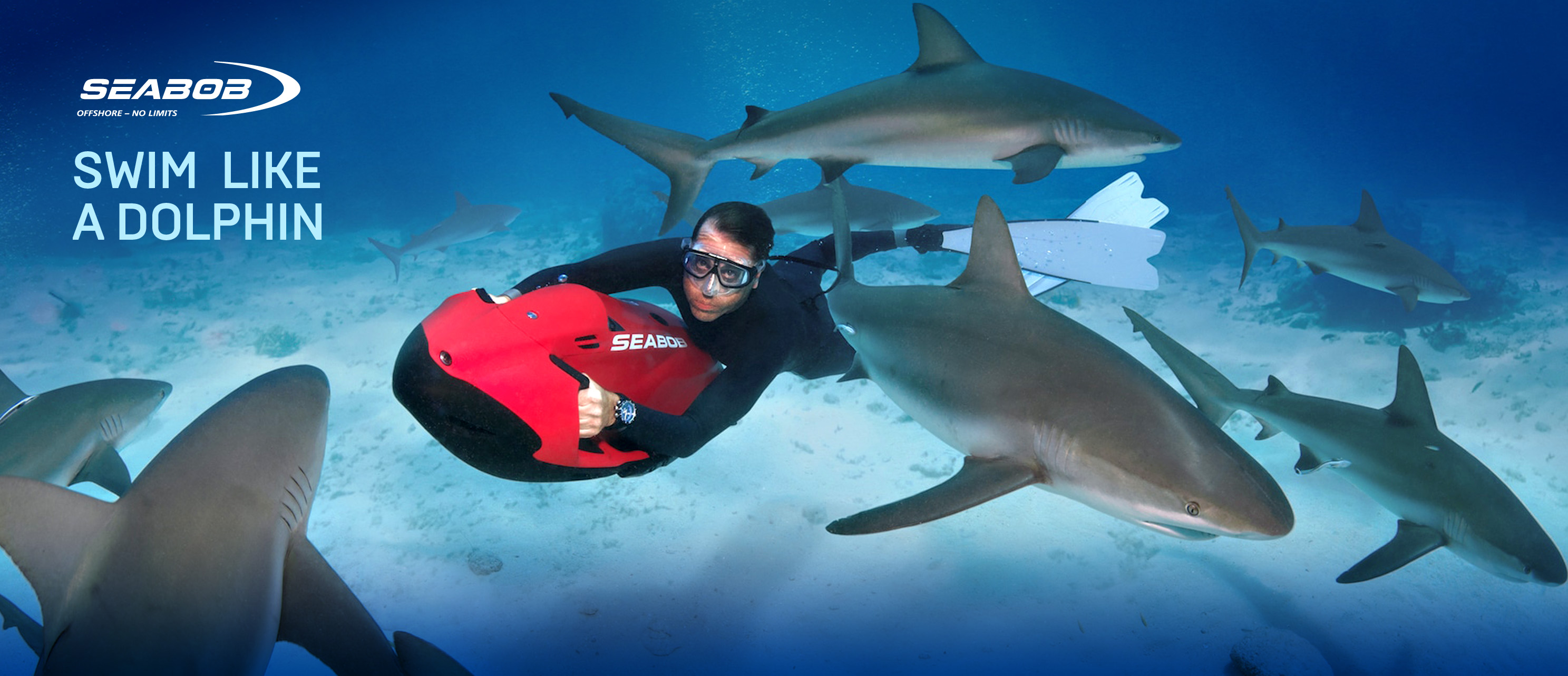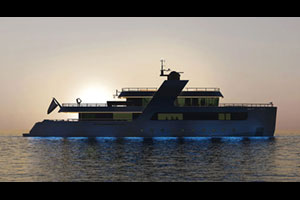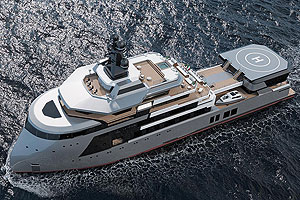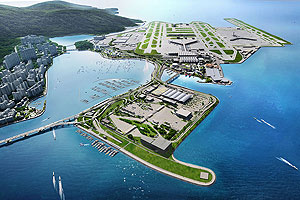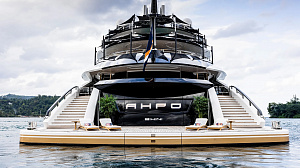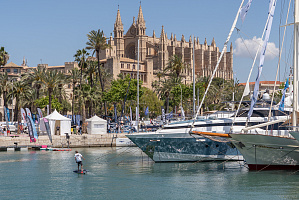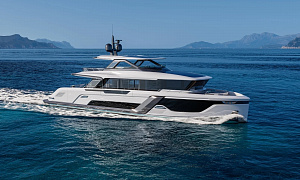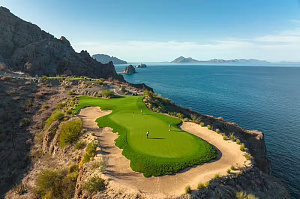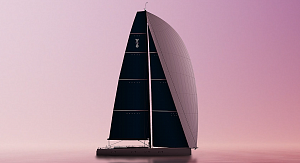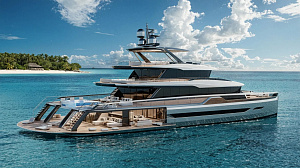




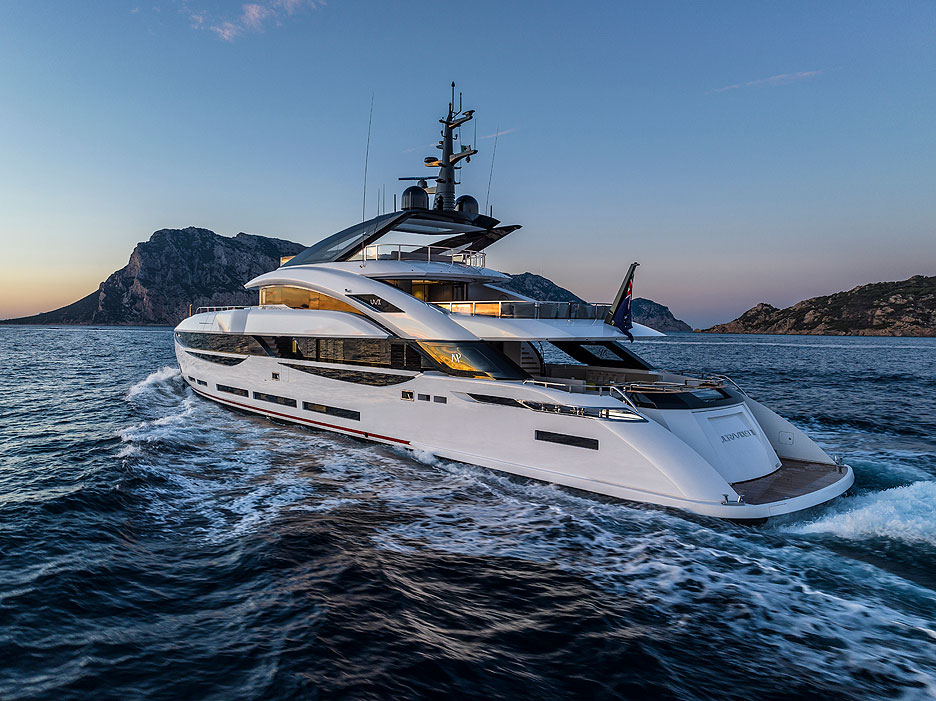
The concept of gran turismo was born in Italy, originally describing cars with a sporty character and elegant design. These vehicles combined the speed and handling of a sports car with the comfort and refinement of a luxury ride for long journeys. Today, this term perfectly encapsulates the spirit of the Gran Turismo yacht family, which has gained significant recognition and admiration among buyers.
The Gran Turismo lineup continues to expand, now offering yachts ranging from 33 to 80 meters in length. In May 2023, the new flagship, the Gran Turismo 70, was unveiled, and just two months later, the shipyard announced an even larger model—the 80-meter, already sold and scheduled for delivery in 2027.
The latest addition to the lineup is the ISA 45 GT, christened Ultraviolet II (commonly referred to as UV II). Launched last summer, this stunning yacht made her public debut at the Cannes Yachting Festival and the Monaco Yacht Show. Her appearance marked the global premiere of the Gran Turismo series. However, UV II is technically the second hull of the ISA 45 GT model. The first, Aria SF, commissioned by Italian businessman Paolo Scudieri, was to be exhibited at Cannes and Monaco in 2022 but tragically caught fire near Formentera just weeks before its premiere.
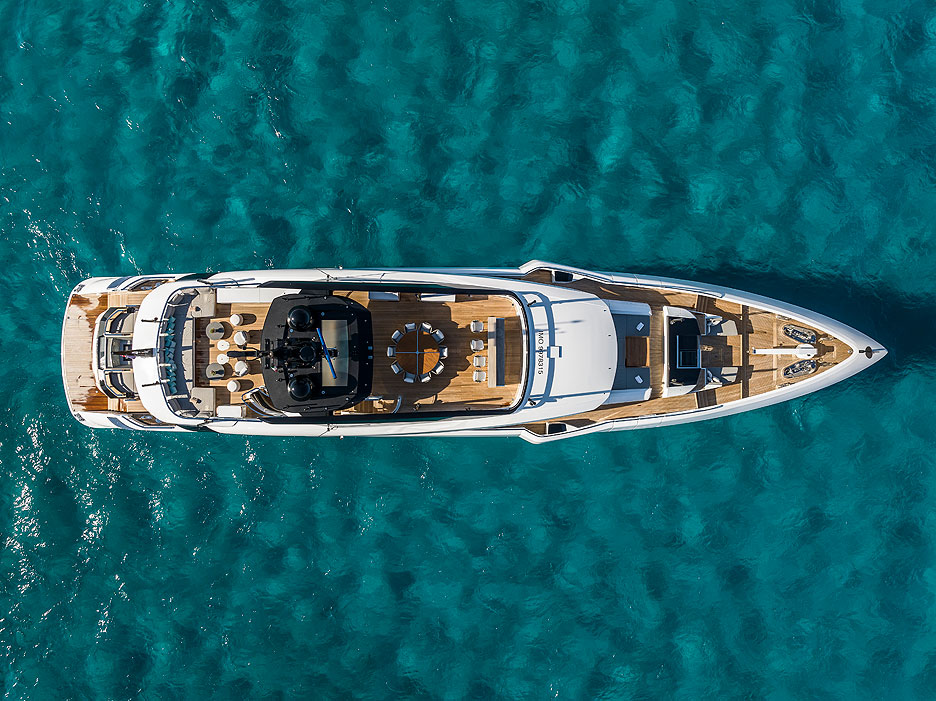
The entire Gran Turismo series shares the same design team. The naval architecture was developed by the technical department at Palumbo Superyachts, with the exterior and interior concepts penned by Enrico Gobbi and his Team for Design studio. Interior finishes were handled by Luca Dini Design & Architecture. Despite a shared aesthetic—characterised by vertical bows, raised foredecks, and aft-set superstructures with dynamic profiles—each model incorporates unique features and layouts to maximise functionality while maintaining distinct character.
For instance, UV II boasts intricate air intakes reminiscent of a sports car, and its layout reflects the owner’s preference for outdoor living, with a higher ratio of open to enclosed relaxation areas. Unlike its predecessors, which featured metallic and grey tones, UV II is finished in pure white, accented by a thin red stripe above the waterline and a black radar arch resembling a shark fin.
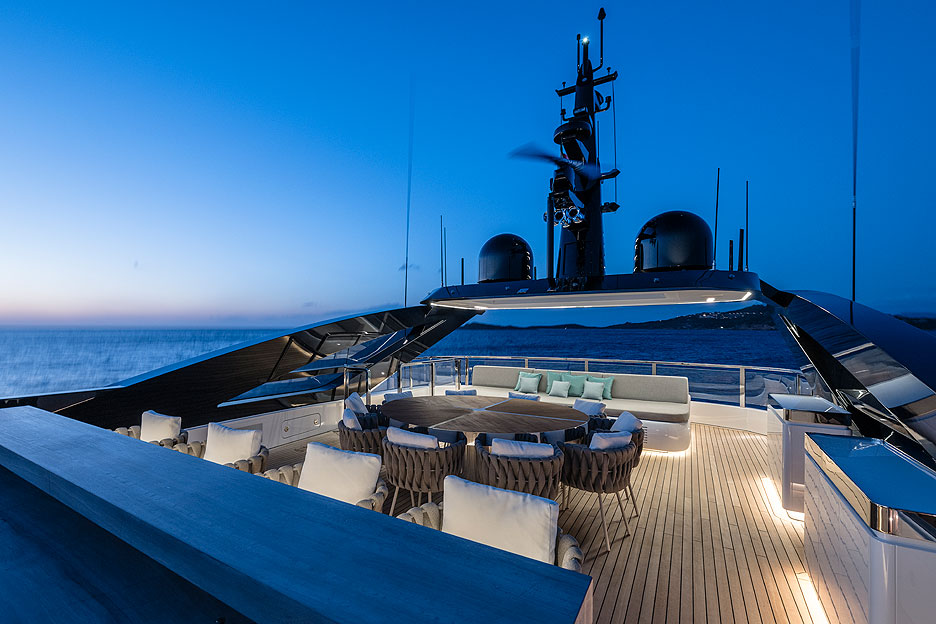
The displacement hull of Ultraviolet II is constructed from steel, while the superstructure is made of aluminium. (An all-aluminium variation of the GT 45 model is also available upon request.) The yacht’s exterior design features semi-arches that connect all three decks, evoking the proportions of a luxury sports coupe. Sharp black glazing contrasts with the white hull, emphasising the yacht’s energetic and aggressive profile.
The upper deck is partially covered by a hardtop, which supports radar equipment. Half of the hardtop can be retracted, creating space for sunbathing. This deck also houses a bar and a large round dining table that seats ten. Below, the second deck offers three open-air relaxation areas: a nearly full-beam sofa and grill station on the aft deck; a U-shaped sofa with a telescopic table near the wheelhouse (which converts into a large sunbed with the addition of a mattress); and two smaller sofas near the bow, accessible via a private staircase from the master suite. Technically, this deck is the second level, but since the volume beneath it is occupied by garages and service areas, the bow section serves as the main deck. A crane between the anchor winches allows for easy deployment of RIBs and water toys stored in a large deck hatch. These items can also be stored on the recessed deck itself when the yacht is stationary.
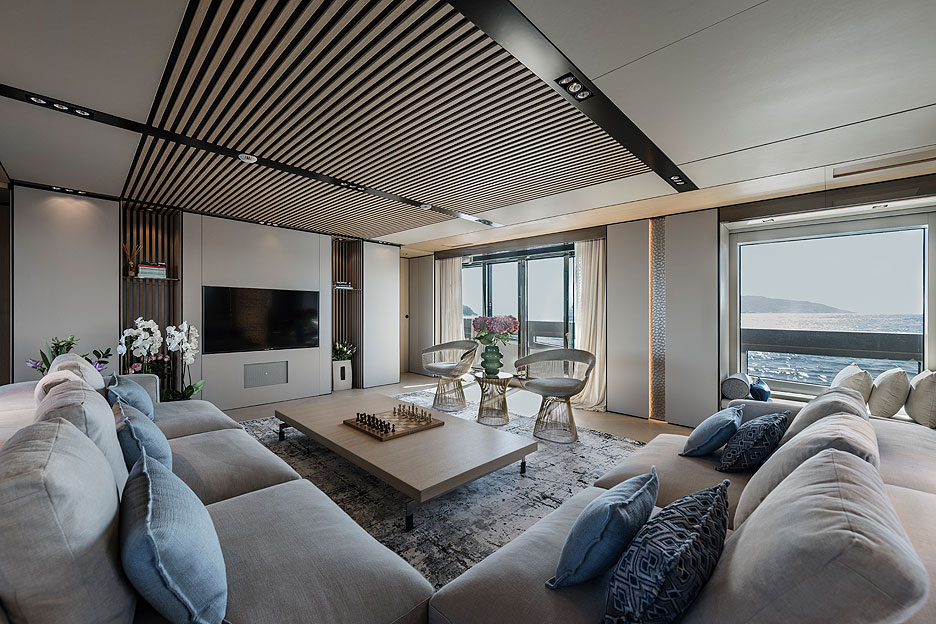
The enclosed superstructure includes a captain’s cabin near the helm station and a dining area with semi-circular panoramic windows. Sliding glass doors seamlessly connect the dining space to the aft terrace, creating a unified indoor-outdoor environment. Meals grilled alfresco can be enjoyed casually outdoors or served formally at the dining table.
Descending to the main deck reveals a salon with floor-to-ceiling windows and an unconventional layout. Unlike most superyachts, where the salon and dining room are combined, UV II separates these spaces. The salon is spacious enough to function as a living room but smaller compared to other yachts. It features a lounge area with chairs facing a plasma screen on the forward wall, while another sofa faces aft, offering views of the cockpit and transom.
The aft section of the main deck is dedicated to relaxation. Parallel sofas frame a striking architectural perspective leading to the rectangular infinity pool at the stern. The pool features transparent front and rear walls, creating a seamless visual connection to the sea. Its basin is lined with elegant silver mosaic tiles and equipped with a powerful hydromassage system. The pool’s glass bottom doubles as a skylight for the beach club below.
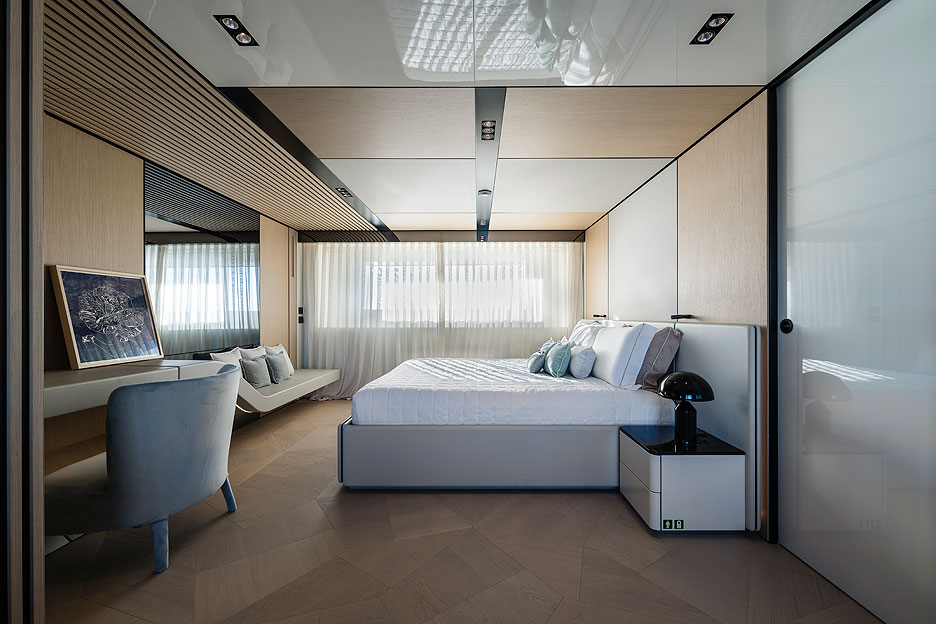
A spiral staircase located midship connects the decks. To the left of the staircase is a galley outfitted with professional-grade kitchen equipment, rivalling that of high-end restaurants.
The owner’s suite is located forward on the main deck. It begins with a private lounge, which can function as a cinema. The asymmetrical bedroom spans the full beam, with a king-size bed positioned to port and a seating area and open office with a desk, shelves, and office equipment to starboard. A central door leads to a walk-in wardrobe and en-suite bathroom, as well as a staircase providing private access to the bow lounge mentioned earlier, which serves as the owner’s private mini-deck.
The lower deck houses four guest cabins, arranged symmetrically: two with double beds and two with twin beds that can be converted into doubles. Soundproof bulwarks separate the guest quarters from the crew area, which accommodates up to nine people, as well as service spaces (forward) and the engine room (aft).
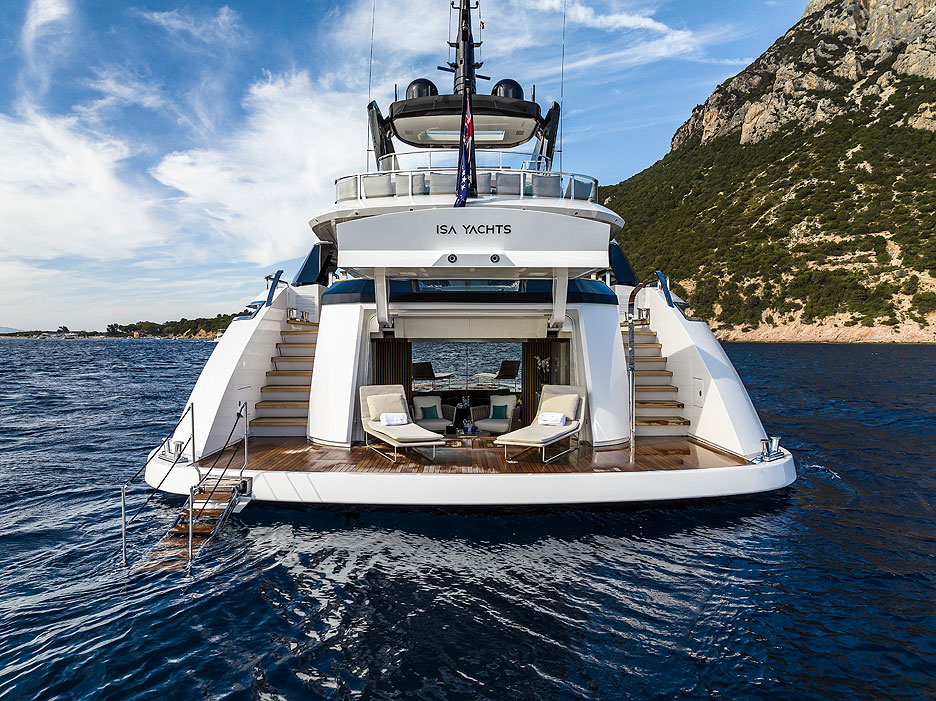
From the main deck, two staircases flank the pool, leading to a wide swim platform. This area is large enough to accommodate sun loungers. A retractable ladder with handrails on the port side allows for easy water access. The transom’s fold-up door reveals a hall equipped with gym equipment, which can be replaced with seating if desired. A large mirror at the far end reflects the sea, creating the illusion of transparency. Behind this wall lies an additional garage for a 5-meter tender, accessible via starboard-side doors. The yacht also features a dedicated dive centre with storage for scuba gear.
The interior, designed in a contemporary style by Luca Dini, strikes a balance between minimalist forms and luxurious materials used for furniture, finishes, and lighting. The harmonious colour palette includes shades of gold, sand, and turquoise, accented by deep purple (seen in textiles, glassware, and wall patterns) and bright green (used for poolside pouffes).
Ultraviolet II is powered by two Cat C32 ACERT diesel engines, delivering a combined 2,600 hp. These engines enable a top speed of 15.4 knots and a cruise speed of 14 knots. At an economical speed of 12 knots, the yacht has a range of 3,500 nautical miles, making it well-suited for long-distance voyages.
With its blend of sporty aesthetics, luxurious amenities, and impressive performance, Ultraviolet II perfectly embodies the essence of the Gran Turismo philosophy—elegance, power, and comfort, seamlessly integrated into one exceptional vessel.
